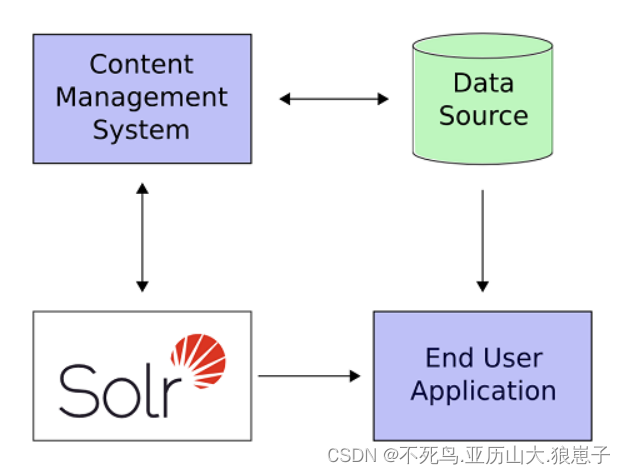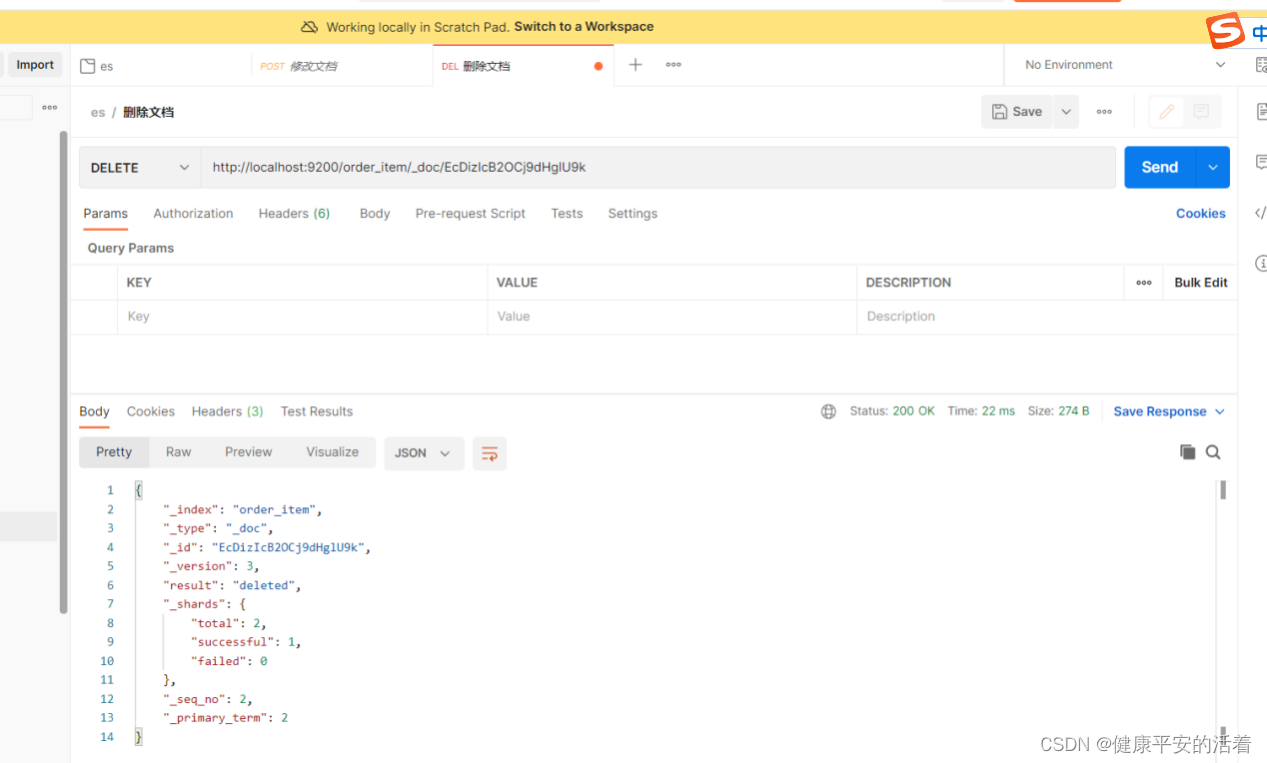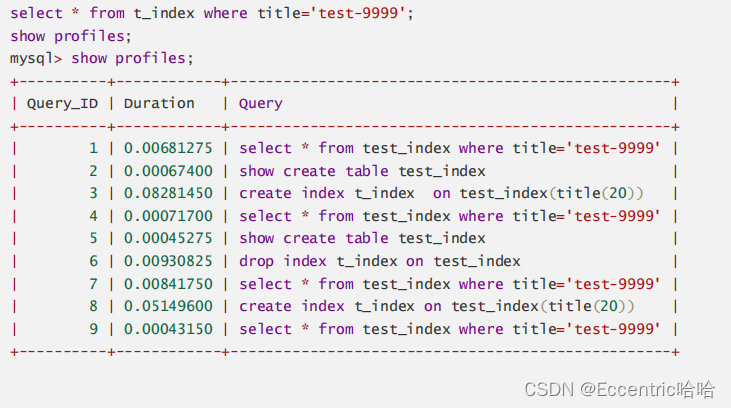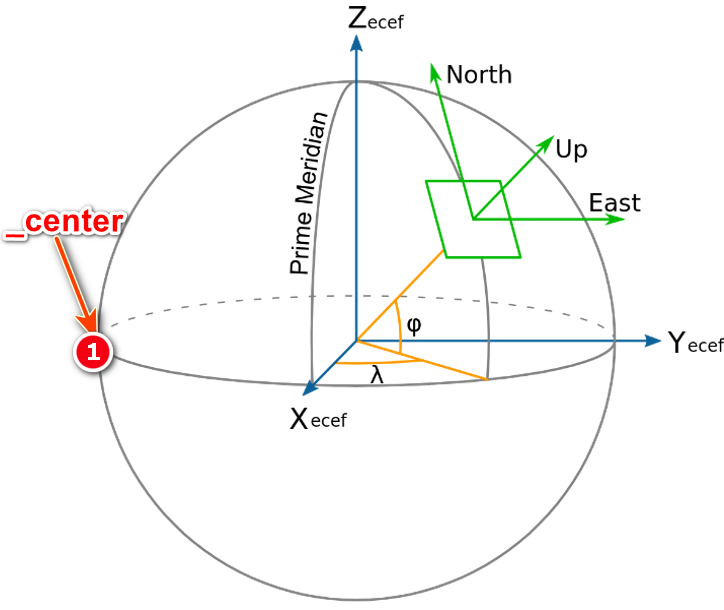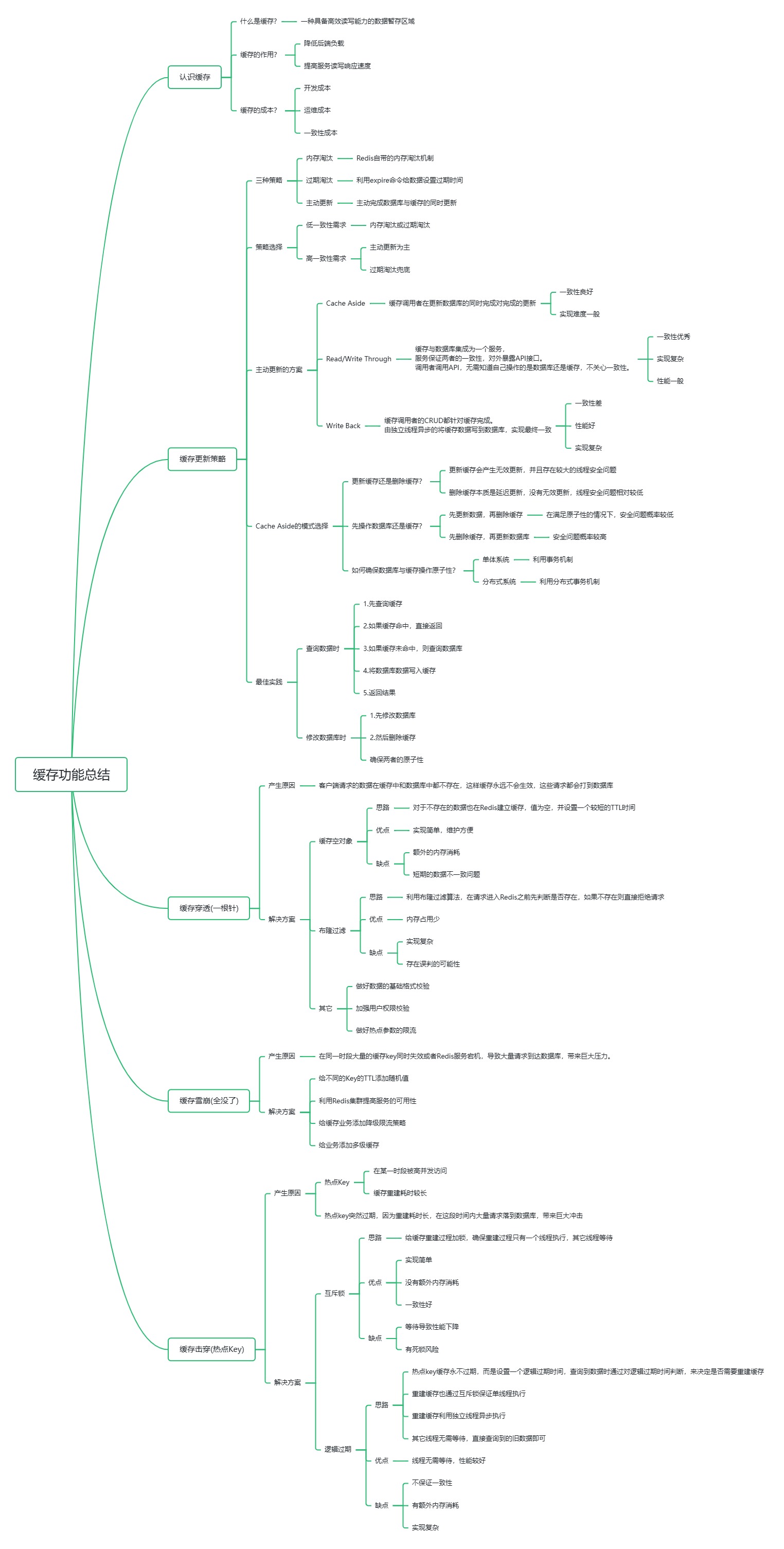目录
一. set和map的简介
1.1 set的简介
1.2 map的简介
二. set的主要接口函数及使用方法
2.1 构造及赋值相关接口函数
2.2 通过迭代器遍历set
2.3 结构修改相关接口函数
2.4 其他主要接口函数
三. map的主要接口函数及使用方法
3.1 构造和赋值相关接口函数
3.2 通过迭代器遍历map
3.3 结构修改相关接口函数
3.3 查找和访问相关接口函数
一. set和map的简介
1.1 set的简介
- set是按照一定的次序顺序存储数据的容器。
- set的底层是通过二叉搜索树(红黑树)来实现的。
- 在默认情况下,set底层的二叉树遵循左子节点小于根节点、右子节点大于根节点且不能有相同节点的结构要求。
- 每个节点的值key具有const属性,不能被修改。
- 在set中查找某个特定数据的时间复杂度是O(NlogN)。
- 默认情况下,使用正向迭代器遍历set,是按照中序遍历进行的,也就是说会得到一组升序的数据。
- set不可以存储相同的节点,但是multiset可以,multiset与set唯一的不同就是可以存储相同值的节点。
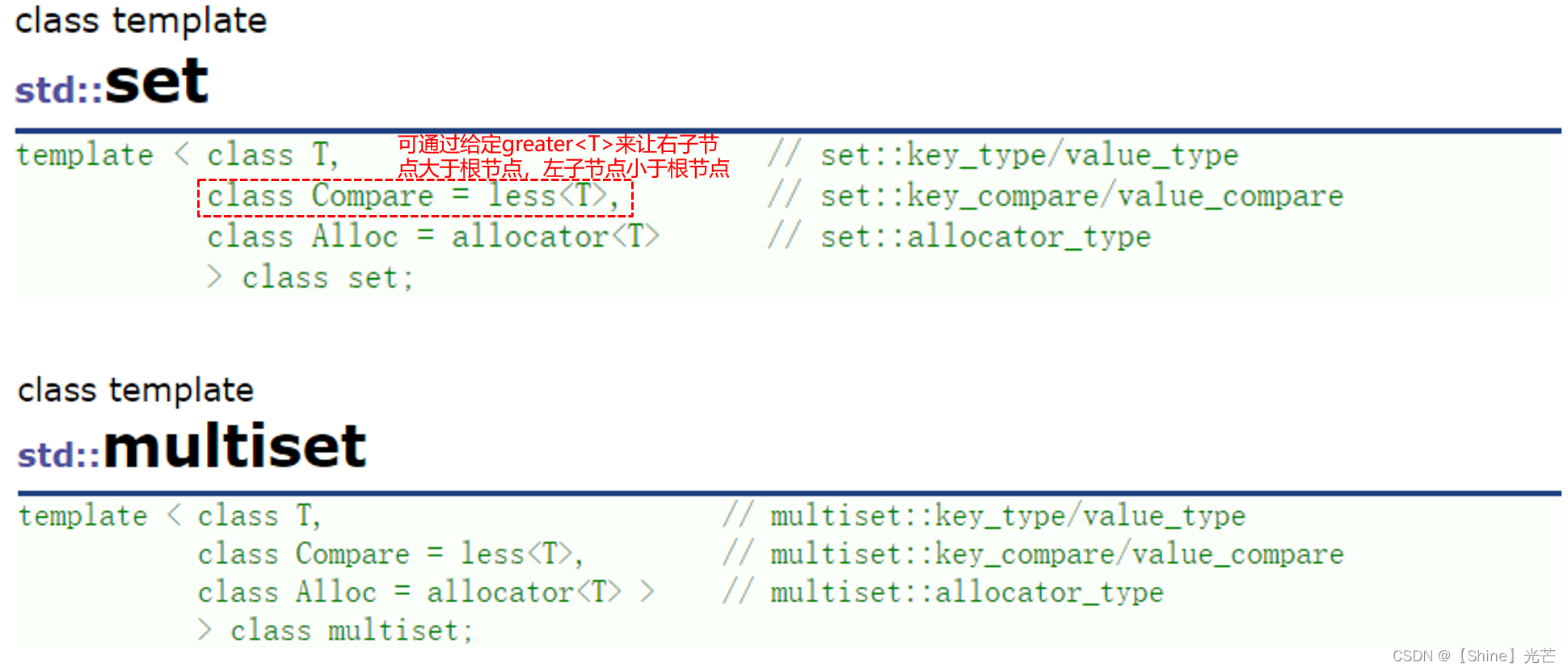
1.2 map的简介
- map是关联式容器。其结构与set类似,底层都是通过红黑树来实现的。
- map和set的不同在于,map存储的数据类型是以Key和Value组成的键值对<Key, Value>,通过比较Key的值来使map满足搜索树的结构要求,而Value只是与Key进行配对的数据,不参数比较。
- map中不允许存储两个Key相同的节点,但是multimap允许。
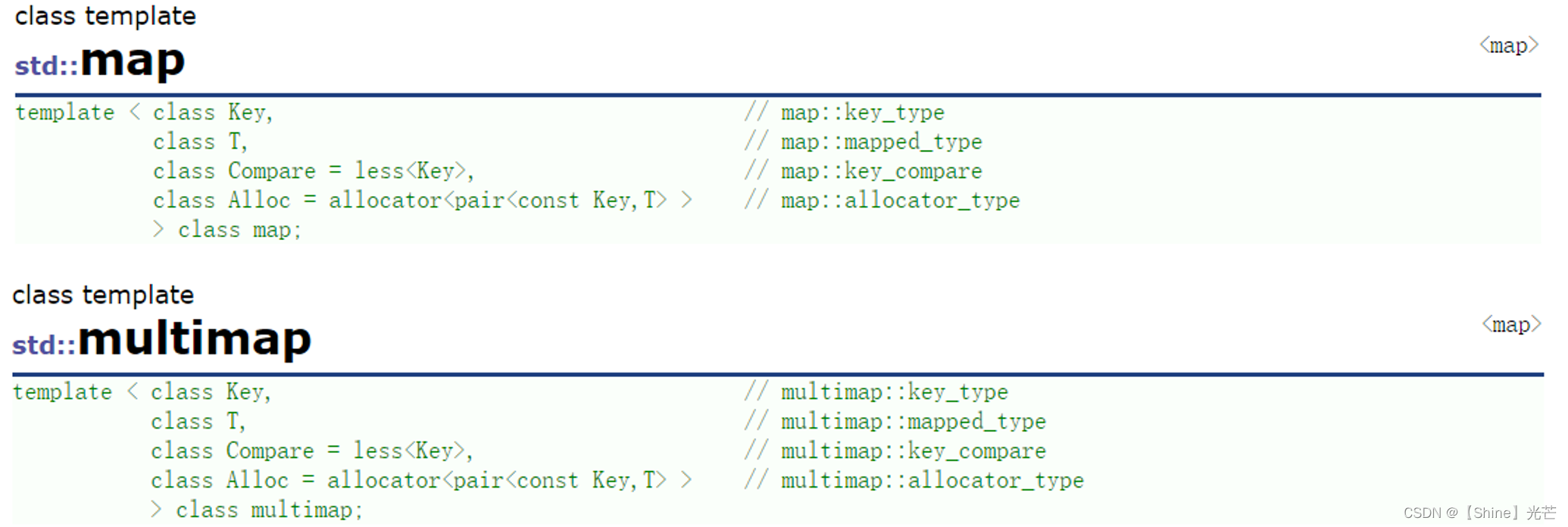
二. set的主要接口函数及使用方法
2.1 构造及赋值相关接口函数
| 接口函数 | 功能 |
|---|---|
| set(const compare& comp = compare) | 默认构造,创建空树 |
| set(InputIterator first, InputIterator last, ...) | 使用迭代器区间初始化 |
| set(const set& x) | 拷贝构造 |
| set& operator=(const set& x) | 赋值运算符重载函数 |
代码2.1:(构造和赋值)
int main()
{
int arr[5] = { 5,2,3,4,1 };
std::set<int> st1; //默认构造
std::set<int> st2(arr, arr + 5); //迭代器区间构造
std::set<int> st3(st2); //拷贝构造
std::set<int, std::greater<int>> st4; //创建右子节点大于根节点左子节点小于根节点的set
st1 = st3; //赋值
return 0;
}2.2 通过迭代器遍历set
默认情况下,使用正向迭代器遍历set是进行中序遍历,得到一组升序的数据。
代码2.2:(set遍历的直接实现)
int main()
{
int arr[5] = { 5,2,3,4,1 };
std::set<int> st1(arr, arr + 5);
std::set<int, std::greater<int>> st2(arr, arr + 5);
//给定迭代器
std::set<int>::iterator it1 = st1.begin();
std::set<int, std::greater<int>>::iterator it2 = st2.begin();
//正向迭代器遍历st1,得到一组升序数据
while (it1 != st1.end())
{
std::cout << *it1++ << " ";
}
std::cout << std::endl;
//正向迭代器遍历st2,得到一组降序数据
while (it2 != st2.end())
{
std::cout << *it2++ << " ";
}
std::cout << std::endl;
return 0;
}
代码2.3:(set遍历的函数模板实现)
template<class T, class Compare = std::less<T>>
void SetPrint(const std::set<T, Compare>& st)
{
typename std::set<T, Compare>::const_iterator it = st.begin();
while (it != st.end())
{
std::cout << *it++ << " ";
}
std::cout << std::endl;
}2.3 结构修改相关接口函数
| 接口函数 | 功能 |
|---|---|
| pair<iterator,bool> insert(const Type& x) | 在插入值为x的节点 |
| void insert(InputIterator first, InputIterator last) | 插入位于一段迭代器区间的数据集 |
| size_t erase(const Type& x) | 删除指定值 |
| void erase(iterator pos) | 通过给定迭代器位置删除特定节点 |
| void clear() | 清空所有节点 |
- 这里需要注意insert函数的返回值:insert函数返回一键值对,pair中的first数据为iterator类型,如果成功插入节点(set中没有x),则返回新插入节点的位置的迭代器,如果插入节点失败,则返回与x值相同的节点的迭代器。pair中的second数据类型为bool,插入成功返回true,失败返回false。
- erase返回被删除的节点的个数,因为set不允许有相同的节点,因此erase返回值只能是1或0,而multiset中erase的返回值则可以大于1,因为multiset中允许相同节点的存在。
- 当调用erase函数给定值不存在或迭代器位置不合法时:如果使用给定值x的方法删除set的节点且x不存在,那么函数不进行任何工作,直接返回。如果给定不合法的迭代器位置调用erase,那么程序会崩溃。
代码2.4:(插入、删除和清空操作)
int main()
{
std::set<int> st;
st.insert(7);
st.insert(1);
st.insert(0);
st.insert(4);
st.insert(5); //插入数据
SetPrint(st); //set正向遍历打印函数
st.erase(7);
st.erase(10);
st.erase(0);
SetPrint(st);
st.clear(); //清空元素
SetPrint(st);
return 0;
}
2.4 其他主要接口函数
| 接口函数 | 功能 |
|---|---|
| iterator find(const Type& x) const | 查找特定数据x函数 |
| size_t count(const Type& x) const | 统计set中x出现的次数 |
| iterator lower_bound (const Type& x) const | 返回大于或等于x的最小节点 |
| iterator upper_bound (const Type& x) const | 返回大于x的最小节点 |
| pair<iterator,iterator> equal_range (const Type& x) const | 返回包含x的区间 |
- find函数如果没有找到值为x的节点,就返回end()的迭代器位置,如果要使用find函数的返回值,保险起见,应当检查 st.find(x) != st.end() 是否成立。
- 由于set中不允许有相同的节点,count的返回值只能是0或1。
- equal返回的区间只包含一个数:[first, second) -- 左开右闭区间,*first = x。
代码2.5:
int main()
{
std::set<int> st = { 10,10,20,30,40,40,50,60,70,80,90 };
//查找数据20 -- 找得到
std::set<int>::iterator pos1 = st.find(20);
if (pos1 != st.end())
{
std::cout << "找到了" << std::endl;
}
else
{
std::cout << "没找到" << std::endl;
}
//查找数据100 -- 找不到
std::set<int>::iterator pos2 = st.find(100);
if (pos2 != st.end())
{
std::cout << "找到了" << std::endl;
}
else
{
std::cout << "没找到" << std::endl;
}
std::set<int>::iterator it1 = st.lower_bound(30);
std::set<int>::iterator it2 = st.lower_bound(40);
std::set<int>::iterator it3 = st.upper_bound(40);
std::set<int>::iterator it4 = st.upper_bound(45);
std::cout << "*it1 = " << *it1 << std::endl;
std::cout << "*it2 = " << *it2 << std::endl;
std::cout << "*it3 = " << *it3 << std::endl;
std::cout << "*it4 = " << *it4 << std::endl;
std::pair<std::set<int>::iterator, std::set<int>::iterator> pa = st.equal_range(50);
std::cout << "first=" << *pa.first << ", " << "second=" << *pa.second << std::endl;
return 0;
}
三. map的主要接口函数及使用方法
3.1 构造和赋值相关接口函数
| 接口函数 | 功能 |
|---|---|
| map(const compare& comp = compare) | 默认构造,创建空树 |
| map(InputIterator first, InputIterator last, ...) | 使用迭代器区间初始化 |
| map(const map& x) | 拷贝构造 |
| map& operator=(const map& x) | 赋值运算符重载函数 |
代码3.1:(构造和赋值)
int main()
{
std::map<int, int> mp1; //默认构造
std::map<int, int> rmp;
rmp[1] = 1;
rmp[3] = 3;
rmp[2] = 2;
std::map<int, int> mp2(rmp.begin(), rmp.end()); //通过迭代器区间构造
std::map<int, int> mp3(mp2); //拷贝构造
mp1 = mp2; //赋值
return 0;
}3.2 通过迭代器遍历map
注意:由于map存储的是键值对,对于map的迭代器it,不能直接对it解引用,*it会报错。如果想获取键值对中的数据,应当使用(*it).first/second 或it->first/second。
代码3.1:(迭代器遍历map)
int main()
{
std::map<int, int> mp;
mp[1] = 1;
mp[3] = 3;
mp[2] = 2;
std::map<int, int>::iterator it = mp.begin();
while (it != mp.end())
{
//std::cout << (*it).first << "=>" << (*it).second << " ";
std::cout << it->first << "=>" << it->second << " ";
++it;
}
std::cout << std::endl;
return 0;
}
3.3 结构修改相关接口函数
| 接口函数 | 功能 |
|---|---|
| pair<iterator,bool> insert(const pair<T1,T2>& x) | 数据插入函数 |
| void insert(InputIterator first, InputIterator second) | 插入某段迭代器区间的数据 |
| size_t erase(const Type_Key& x) | 删除键值对中Key为x的数据 |
| void erase(iterator pos) | 删除特定迭代器位置的节点 |
| void erase(iterator first, iterator second) | 删除特定迭代器区间的节点 |
| void clear() | 清空元素 |
- make_pair(const Type1& key, const Type2& value) -- 键值对创建函数,给定参数为键值对的key和value,返回键值对pair<Type1,Type2>
代码3.2:(结构修改)
int main()
{
std::map<int, int> mp;
mp.insert(std::make_pair(5, 5));
mp.insert(std::make_pair(7, 7));
mp.insert(std::make_pair(3, 3));
mp.insert(std::make_pair(1, 1));
mp.insert(std::make_pair(9, 9)); //插入数据
std::map<int, int>::iterator it = mp.begin();
while (it != mp.end())
{
std::cout << it->first << "=>" << it->second << " ";
++it;
}
std::cout << std::endl;
mp.erase(1);
mp.erase(9); //给定值删除
mp.erase(mp.begin()); //给定迭代器位置删除
it = mp.begin();
while (it != mp.end())
{
std::cout << it->first << "=>" << it->second << " ";
++it;
}
std::cout << std::endl;
mp.clear(); //清空元素
return 0;
}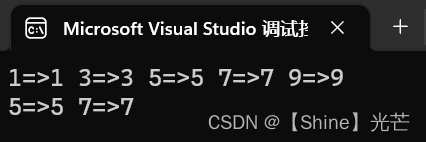
3.3 查找和访问相关接口函数
| 接口函数 | 功能 |
|---|---|
| iterator find(const Key_Type x) | 查找键值对Key为x的节点 |
| Value_Type& operator[](const Key_Type x) | 通过指定的Key的值x访问与之配对的Value值 / 创建Key值为x的新节点 |
- operator[]函数:如果在二叉map中找到了x,那么就直接返回与之配对的Value值的引用。如果没有找到x,那么就会以x为Key插入新的节点,但是Value的值就只能调用的类型的默认构造来给初值,无法保证新插入的节点的Value初值是需要的。
代码3.3:(查找和访问)
int main()
{
std::map<int, int> mp;
mp.insert(std::make_pair(5, 5));
mp.insert(std::make_pair(7, 7));
mp.insert(std::make_pair(3, 3));
mp.insert(std::make_pair(1, 1));
mp.insert(std::make_pair(9, 9));
std::map<int, int>::iterator it = mp.find(3);
std::cout << it->first << "=>" << it->second << std::endl;
mp[3] = 5; //3存在
std::cout << "mp[3] = " << mp[3] << std::endl;
mp[10] = 10; //10不存在
std::cout << "mp[10] = " << mp[10] << std::endl;
return 0;
}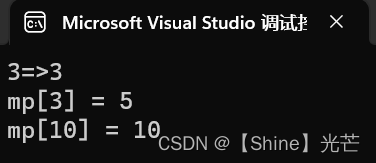

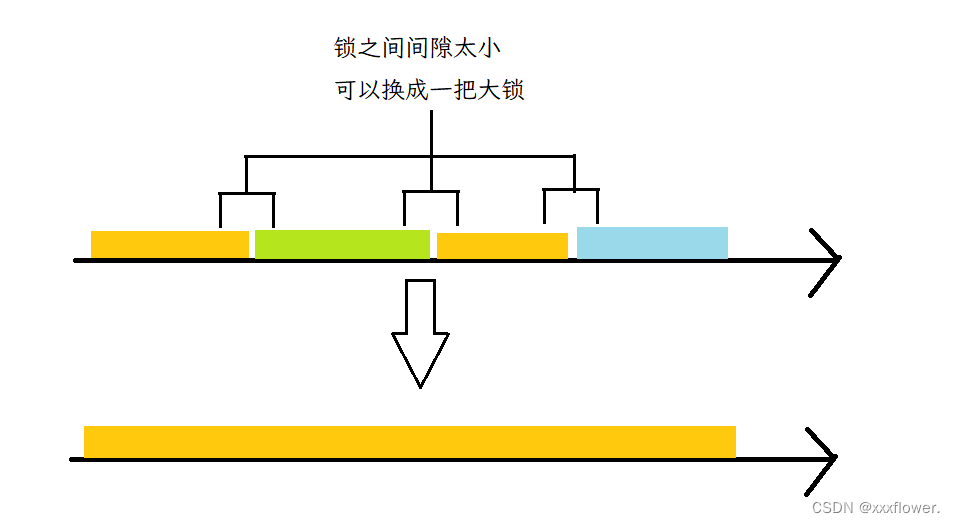




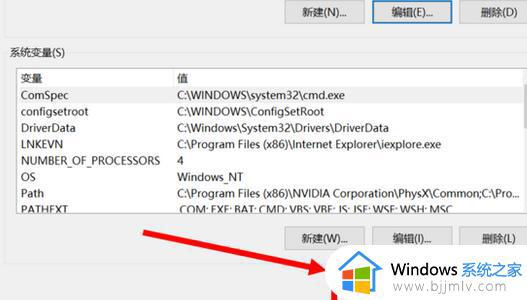
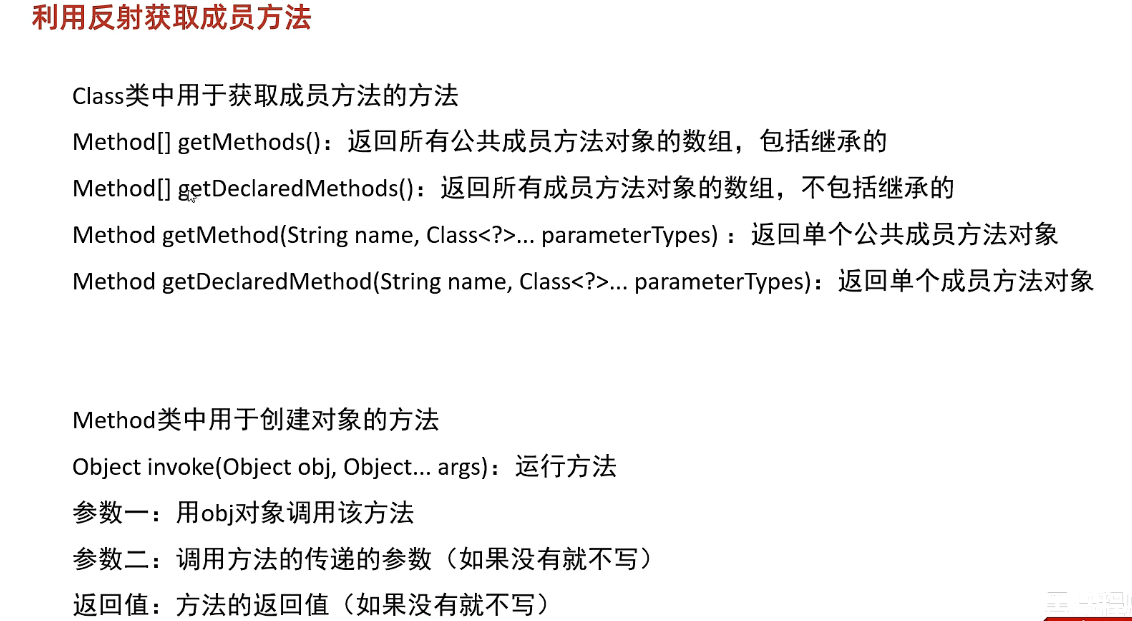
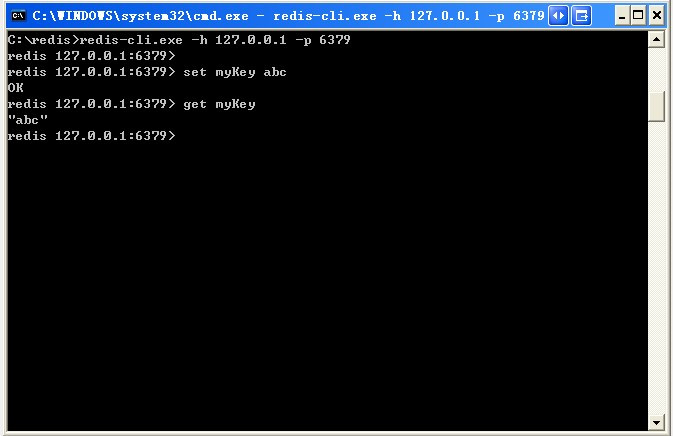




![[Golang] 爬虫实战-获取动态页面数据-获取校招信息](https://img-blog.csdnimg.cn/ed1783558dfa434ab6e44ae52069de24.png)
